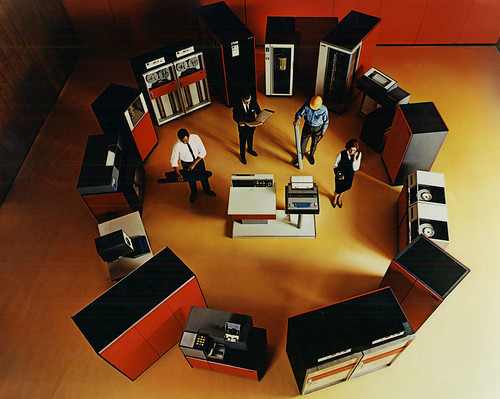 On this day in 1964, IBM announced what was their largest and most expensive project to date. It was a series that would take over the entire line of current computers. It was called System/360- a name to express its all-encompassing nature.
On this day in 1964, IBM announced what was their largest and most expensive project to date. It was a series that would take over the entire line of current computers. It was called System/360- a name to express its all-encompassing nature.The idea was simple in its description, but much harder in its implementation. This idea was to create a single series of computers that could handle the needs of business computing, scientific computing and everything else in between, using interchangeable parts and peripherals. If a customer had a low-power system, they could easily upgrade to a larger more powerful system without doing a large amount of reprogramming. The implementation also coincided with new logic hardware (solid logic technology) and a unified style that carried throughout every device.
As one would suspect, this was much harder to implement than to describe. There were reasons why different computers in the IBM line would use different types of logic and different layouts for those devices, not at all least being cost. The System/360 project was a 'bet the business' project for IBM that many engineers and executives at the time were uncomfortable with, but proved to be one of the most significant moves IBM made in the 1960s. The System/360 was involved in many important events in the 1960s, most important being the computer system that landed us on the moon. The system would also be present in countless universities and companies, not to mention the computer of choice for control of air traffic (in some cases still in service until the 1990s!) and the first airline reservation systems.
It has become my favorite computer system since I was quite young and I have been quite disappointed that no one seems to be willing to give this computer a proper 50th. Therefore, I am dedicating this week to the System/360. Every day I will examine a certain aspect of the system in detail, working off of pictures and information that I have amassed over the years.
I have spent more time than I would like to admit researching this system, especially in an effort to create some kind of replication of it on a hardware level. A fools errand perhaps, but when one really wants a computer and most of the actual ones were busted up for scrap, one tends to get a bit desperate. (So far the only major thing holding me back is backplane hardware, which I'll talk about later in the week).
Most of the information that I have been working off of is things that are spaced far throughout the internet. A special shout-out to Bitsavers for being absolutely essential to understanding the hardware of these computers. Also, until recently I did not have regular access to it, but I finally bought the wonderful book by Pugh, Johnson and Palmer, IBM's 360 and Early 370 Systems, that gives just an absolute boatload of information about the formulation, design, architecture and politics of the System/360. If you are interested in this system, it is required reading. It is also a source of information that will show up this week.
To end this post, and kick off this anniversary week, I will leave you with some of my favorite System/360 pictures.

Early promotional material
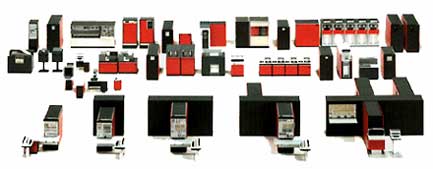
The System/360 Family
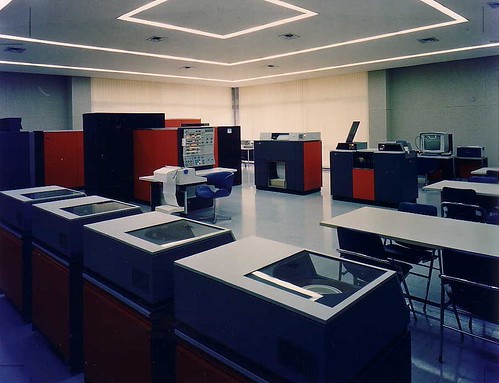
Unknown computer center
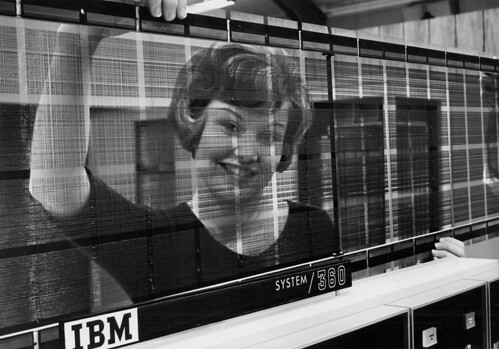
Worker holding up plane of 'Large Core Storage'
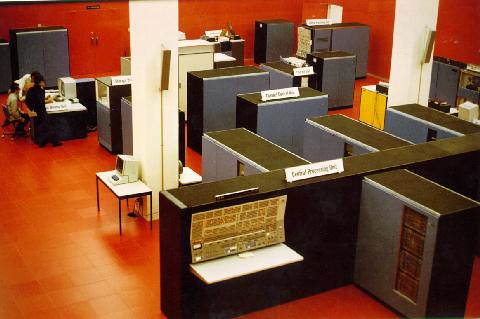
At the University of Waterloo, in the 'Red Room'

With IBM CEO Tom Watson Jr.

At the NASA Real Time Computing Center(RTCC)

No comments:
Post a Comment